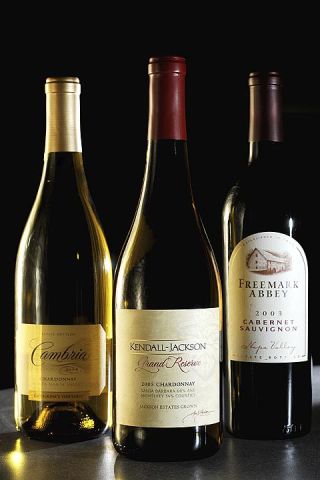Dee Hitch
On Wine
Every business has its share of controversial individuals. Jess Jackson of Kendall-Jackson is one in the wine industry, probably for one main reason: he thought of something no one else had done and parlayed it into a fortune.
First, he was a land-use lawyer who retired early. Early retirees are usually envied. He bought some land in California wine country, planted and sold grapes. A time came when there were no buyers for the grapes, so he decided to make his own wine. His wife’s maiden name, Kendall, and his name are combined as the brand.
Whether it was intentional or not, the Kendall-Jackson chardonnay had residual sugar that made it sweeter than most. The wine-buying public bought it in cases. Analysis proved that it did have some residual sugar. So what? It’s not illegal, and as I said, the wine-buying public loved it and still does. There’s a saying in the wine retail trade: People say they like dry, but they really like sweet.
As fortunes grew, Jess Jackson began buying more land and wineries. Jackson Family Estates now encompasses more than 30 brands. He has expanded into other countries and actually owns a barrel-making factory in France — not to mention two thoroughbred farms in Kentucky. When I was visiting California wine country in October, he bought another winery called Chateau Potelle and another helicopter. Jackson is currently listed in Forbes World’s “Richest People.”
On my long overdue trip to California wine country, I visited some Jackson Family Estate properties.
The first stop was the Kendall-Jackson Wine Center in Santa Rosa. It has been years since I’ve been to Sonoma, and the area has grown so much. My first clue? While driving along the freeway, I read the sign: “Santa Rosa: Next 10 exits!”
The Kendall-Jackson Wine Center is dedicated to wine education and focuses on the Grand Reserves, Highland Estates and Stature wines, which are the higher-priced wines.
Anyone planning to visit can go online first to download a coupon for their wine-tasting fees. They can also order a tasting with food pairing, tapas-style. The Wine Center boasts a full culinary staff.
The Wine Center is on 120 acres, surrounded by sensory and culinary gardens. The sensory gardens focus on the aromas and flavors which are used to describe wine. Herbs and vegetables which would pair well with various wines are suggested. The culinary gardens have sections dedicated to the cuisines of the world: France, Italy, South America and Asia. Special areas are planted to attract butterflies and beneficial insects.
For the next few days, I visited various wineries under Jackson Family Estate. Ever since the very first time I visited Napa back in the ’70s, I have always stopped at Freemark Abbey in St. Helena. One of the pioneering wineries, it started in 1886 as Tychson Cellars. Imagine my shock to find out that Jackson recently rescued it from bankruptcy! The winery has had several owners. The last ones were two men from India who drove it into bankruptcy within five years of purchase. Jackson not only rescued it, but put it back on its feet with its staff intact.
The woman who was my tour guide had 25 years with Freemark Abbey. She echoed the sentiments of the winery’s staff as she exhibited relief and enthusiasm for the future. From the name, I always thought the winery had some religious connections. Perhaps harkening back to the days of Prohibition and the production of sacramental wine. It turns out that the name is from the third owners: Charles FREEman, MARKquand Foster and Albert “ABBEY” Ahern. It is best known for its cabernet sauvignons and EdelweinGold, a late-harvest riesling dessert wine.
Next, I went to Arrowood Winery in Glen Ellen. Arrowood wines have always been a favorite of mine. Since my visit was during harvest, I was pleased to watch Dick Arrowood moving grapes onto the conveyor belt. After being the first employee and winemaker at Chateau Ste. Jean, Arrowood started off on his own in 1986, founding Arrowood Winery.
I had never visited Matanzas Creek in the Bennett Valley of Sonoma. Founded in 1977 on the site of a retired dairy farm, the winery takes its name from the natural creek running through the area. The Bennett Valley is a relatively new AVA (American Viticultural Appellation), granted in 2003. Besides making wine, Matanzas Creek is known for its lavender. When I was there, lavender centerpieces were being made for a charity dinner. The successful lavender division of Matanzas Creek Winery lulled nearby retirees to begin planting lavender, thinking that they could sell it to the winery. But the winery grows all it needs. In fact, visitors come to Matanzas Creek Winery to see both the wine and the lavender gardens, which grow more than 4,500 plants. Not only did the newly planted lavender get pulled up, some people had to move after losing money in their lavender endeavors. Besides wine, Matanzas Creek sells lavender products for the bath, kitchen and the home through its Web site.
My final winery visit was to Cardinale Oakville, in the Napa Valley. Cardinale is one of Jackson’s original wineries and makes only cabernet sauvignon blends. The cabernet sauvignon is 100 percent Napa from such legendary areas as Mt. Veeder, Stag’s Leap District, Howell Mountain and Oakville. Robert Parker, one of the wine industry’s reviewers, described it as “consistently one of the best proprietary brands of northern California.”
The mission statement for Jackson Wine Estates is: “We are a family-owned and operated wine company, and our No. 1 priority is quality.” Everything I saw during my visit supported this statement.
Dee Hitch can be reached at rockypointlane@aol.com.



